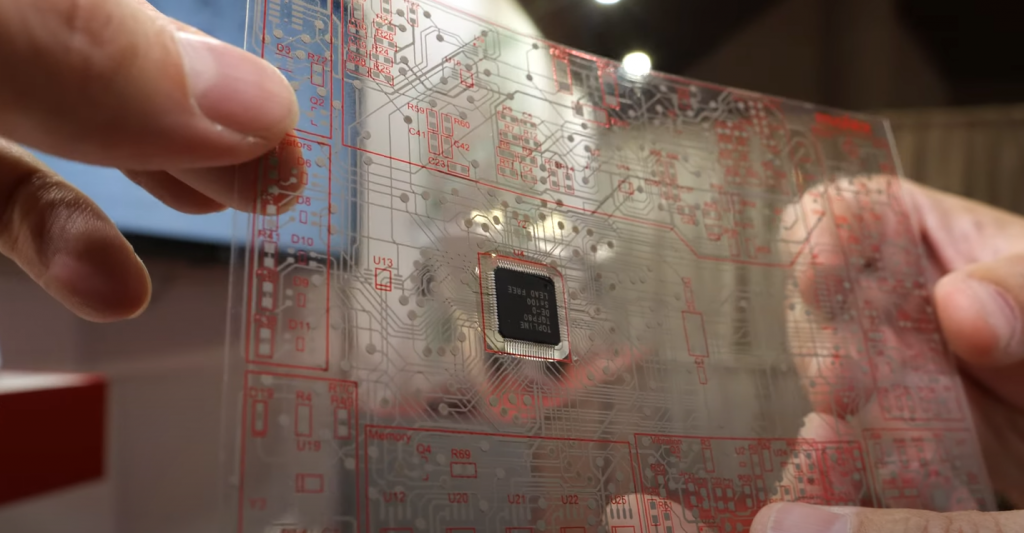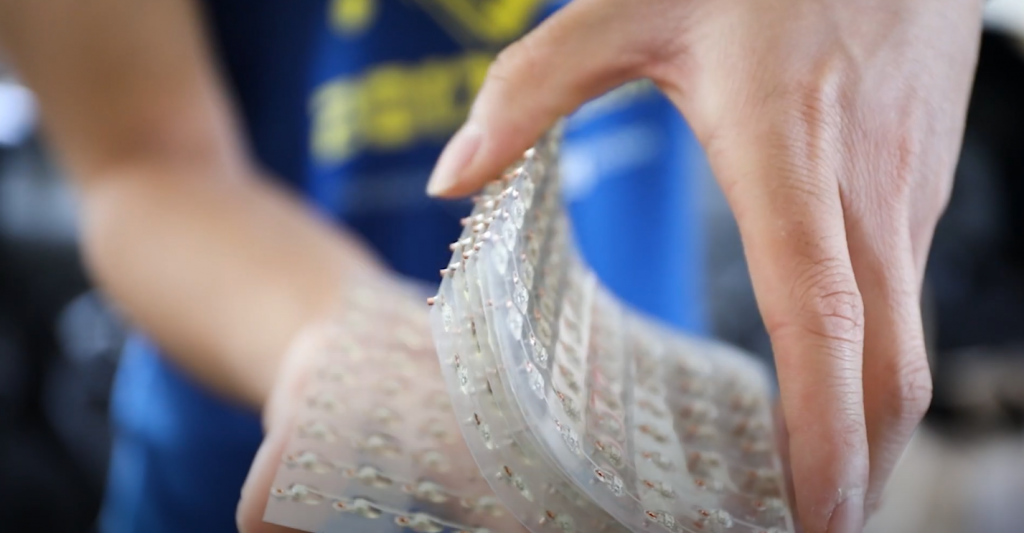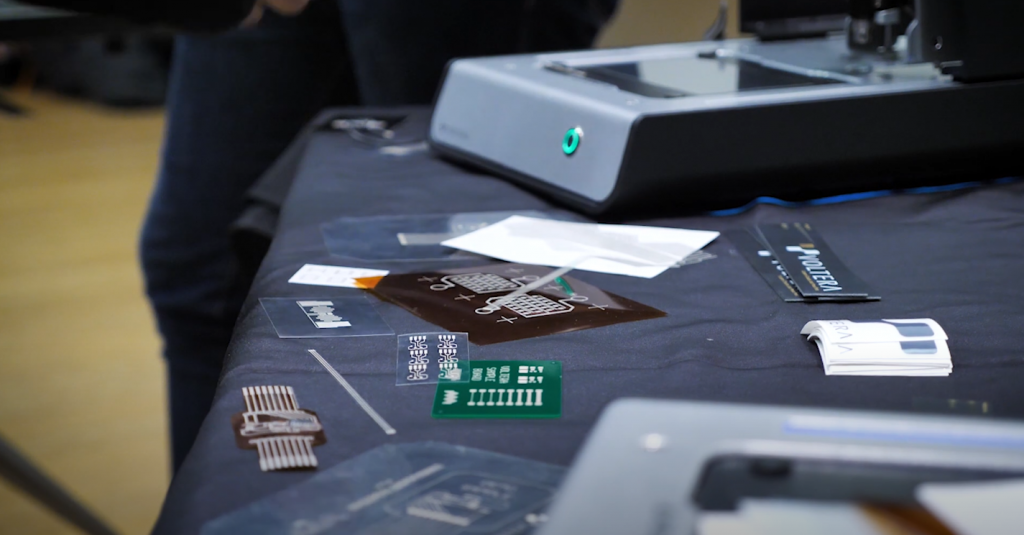Only a few contacting technologies meet the requirements of modern products in the way that Flexible Printed Circuit technology meets them. The field of application of flexible printed circuit boards extends from consumer electronics to automotive electronics. For example, in automotive electronics, modules often need to be built into complex three-dimensional spaces and are subjected to dynamic bending stresses. In this case, the flexible printed circuit board is a profitable and reliable substrate. In addition, the arrangement of conductors on the flexible PCB eliminates mounting errors.
Flexible Printed Circuit Boards and Their Temperature Limits
Due to the increasing demands on contacting technology, manufacturers of flexible printed circuit boards are constantly improving. This applies primarily to qualities such as:
- temperature resistance;
- flexibility;
- material structure;
- thickness;
- cost reduction.
Polyimide with maximum soldering temperature Tmax = 428 °F (220 °C), polyethylene naphthalate with Tmax = 320 °F (160 °C), polyethylene terephthalate with Tmax from 185 to 221 °F (85 to 105 °C), and as a flex-rigid material – FR4 with Tmax = 428 °F (220 °C) are used as basic materials of flexible printed circuit boards.

When designing flexible boards, the manufacturers’ recommendations for topology design must be taken into account. For example, conductors, especially their corners and contours, should be smoothed, and transitions to each other should be smooth. In addition, the areas for soldering can be larger than the holes of the masking films.
New Solution for Automatic Selective Soldering of Flex Boards
For new development of a solution for automatic selective soldering of flex circuit boards in combination with the technique of fixing of flex circuit boards, a significant improvement of the soldering quality has been achieved due to:
- Solder nozzle system for lead-free and oxide-free solder delivery in a protective gas environment
- Automated soldering element with freely programmable process coordinates in x, y, and z-direction with solder breakaway angle as well as targeted flux application and optimum flux heating
- Masking parallel level for fixing flexible circuit boards
- Automatic optical inspection systems for solder joints

The core of this automatic selective soldering solution is the IW1 type inductive solder pump system, which has no rotating parts in the solder and therefore has exceptional wear resistance. The pump, solder reservoir, and nozzle contact the molten solder with high tin content. All these parts are made of steel, titanium, and special ceramic coatings to prevent dissolution effects. Due to the modular soldering system used in this system (unified assemblies are used), a specialized optimum process solution can be realized:
- The use of an automatic brazing machine in a conveyor belt or stand-alone.
- Specialized, easily exchangeable solder nozzles with point, line, and matrix feeding of solder without oxidation of the solder melt by ambient air oxygen.
- Solder nozzles with residue-free self-cleaning of solder joints through continuous feeding of solder.
- Flexible programmable flux and solder feed rates as well as heating rates.
- Production of automatic brazing equipment with 10 axes (max.) x, y, z, and Theta.
- Individual process implementation through selective fluxing and brazing parameters.
- Possibility of tri-shift operation due to redundant process reliability control with central process parameters: solder temperature, amount of shielding gas, solder level, and solder wave height.
- Easy operation via Windows interface with Gerber, DXF, DWG and drill data reception.
- Job Scheduler for service and maintenance tasks, maintenance, operating hours display, and readiness monitoring, etc.
- Graphical visualization of the soldering process.
Flexible Printed Circuit Boards Processing – Features of the Soldering Process
The well-known lead-free solders and fluxes are used for flexible circuit board soldering. Cleaning of oxides, grease, and contamination caused by processing (contamination microparticles) which adhere to the flex circuit board and the soldering surfaces is done by a selective solder wave which transports continuously flowing unoxidized solder to the soldering point with a temperature of about 572 °F (300 °C). Therefore the soldering point is continuously washed, cleaned and soldered with a high-quality guarantee. The heat transfer time from the solder contact to the flexible printed circuit board is only about 0.8-1.2 s: The thermal load of the bordering areas of the synthetic material is small or nonexistent, and the material retains its shape.

The specified dimensions of the electronic assembly do not experience any changes. Therefore, after the selective soldering process, further processing processes can be carried out with the calculation of reproducible geometry of the electronic unit. The selective and, therefore, minimal application of flux reduces the problems associated with flux residues after soldering with respect to migration and corrosion on adjacent components and ensures that subsequent processes can be carried out over a long time. Furthermore, the brazing process can be carried out with environmentally friendly water-soluble fluxes with a low solids content. Due to the optimal drying of the flux, the problem of splashing solder is also alleviated.
Related Video: Soldering Flat Flex to PCB
Conclusion
Based on the high demands on economy and quality in consumer and automotive electronics production, soldering equipment must produce clean solder joints without harmful residues and solder bridges, with perfect meniscus of the solder and filling of the holes with solder. In addition, the flexible PCB soldering process requires a high-quality technique for fixing flexible PCBs in combination with a high-quality automatic soldering system.








I’m no engineer, but I know my way around a soldering iron. When I decided to replace the flex cable in my iPhone 6s Plus, I knew it would be a challenge. But I was up for it.
I started by watching a few YouTube videos on how to do it. Then, I gathered all the tools I would need: a soldering iron, some solder, and a new flex cable. The process looked simple enough: heat up the old solder connecting the flex cable to the logic board, then remove the old flex cable and solder on the new one.
But it wasn’t as easy as it looked. It took me a couple of tries to get the old flex cable off without damaging anything. And soldering on the new one was even harder.